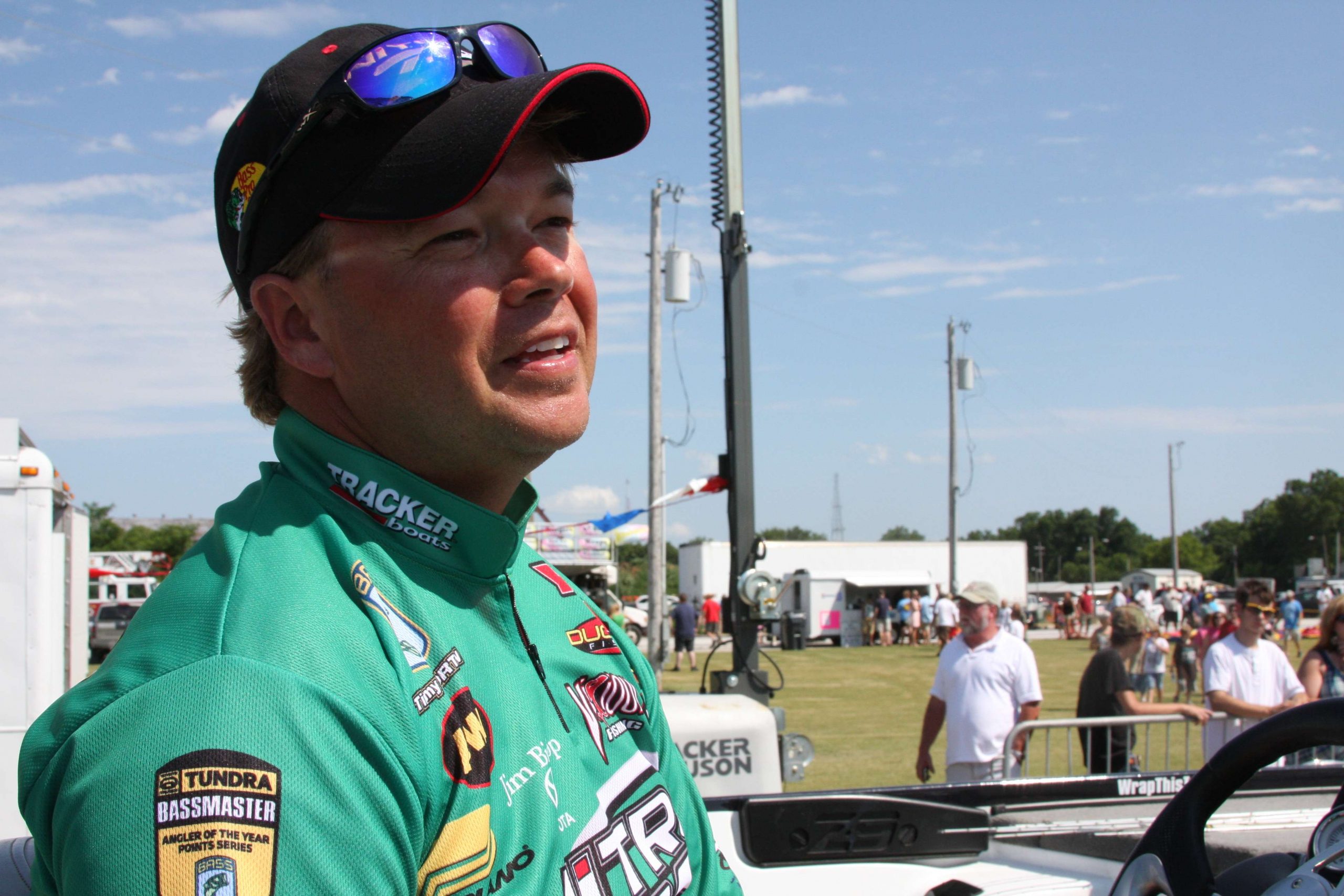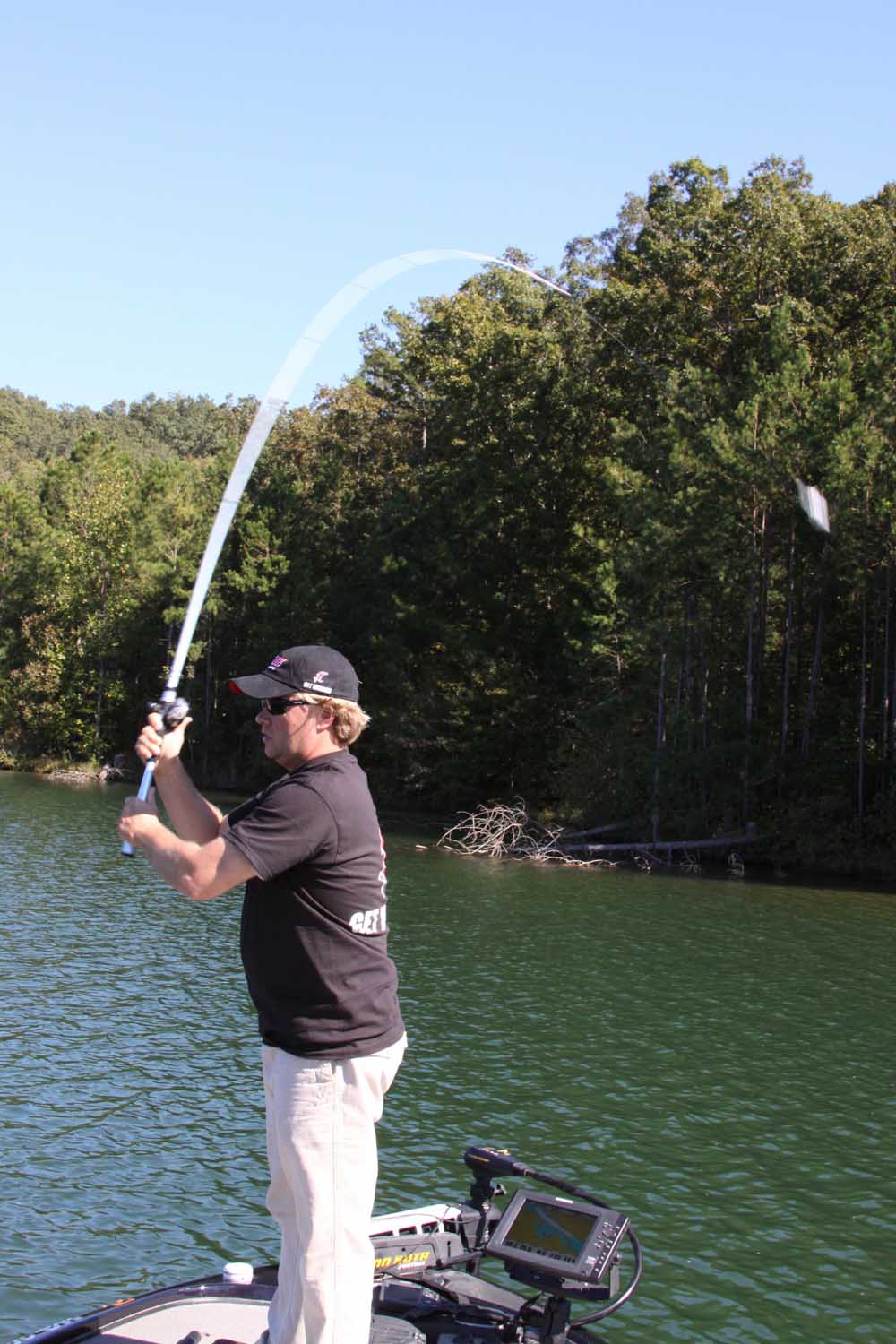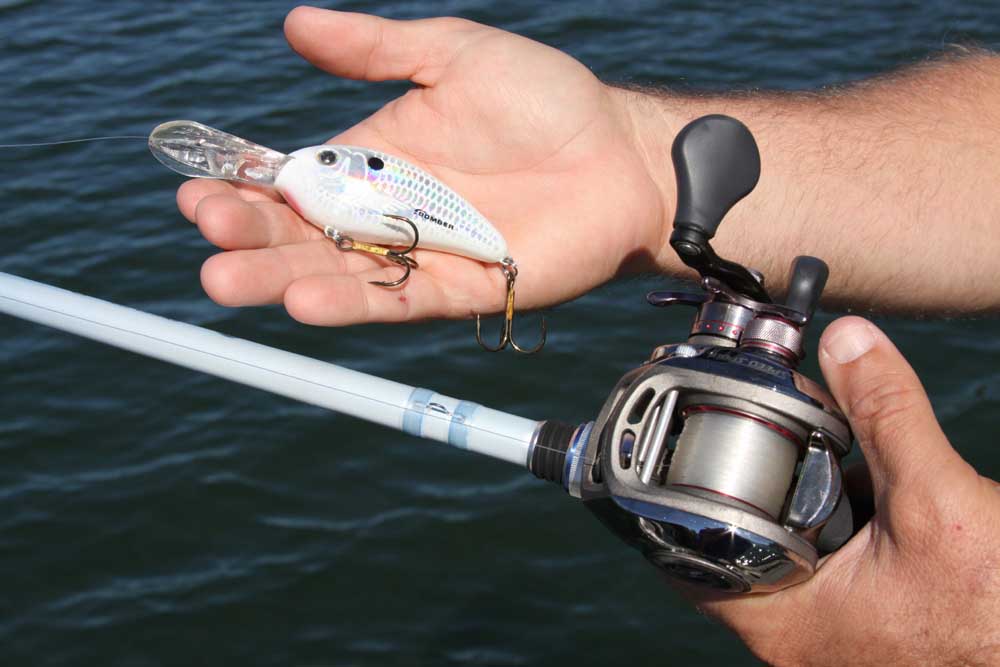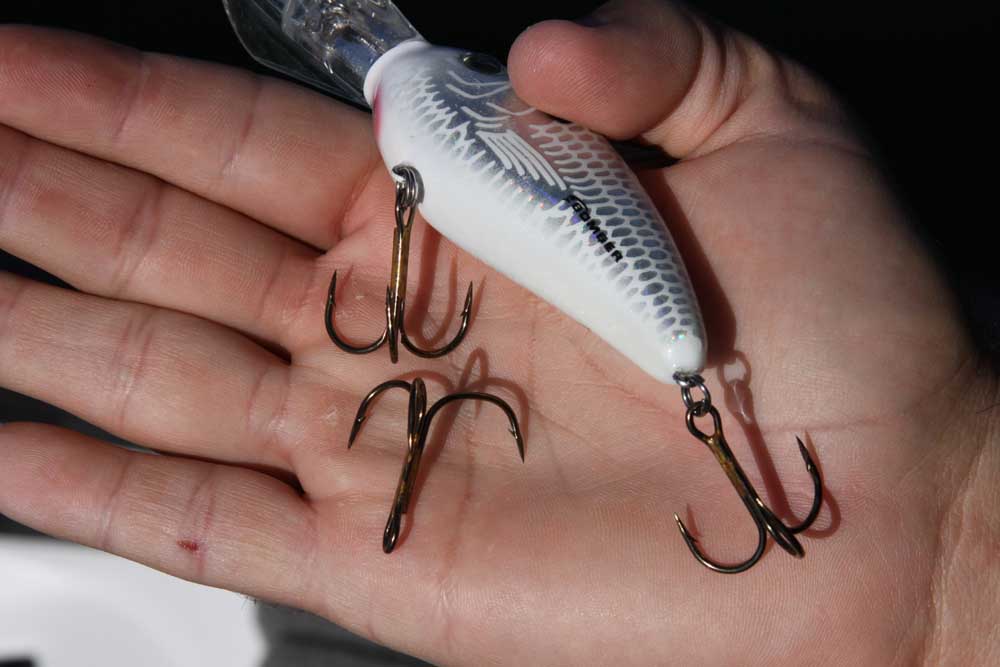
Winding deep crankbaits, especially today’s mega-deep runners, can be a chore for anglers who aren’t accustomed to it.
Deep cranker Tim Horton says anglers often either give up because it’s too tiresome or they struggle with catching and landing fish.
“It’s a technique that can be very effective when the bass are on offshore structure,” he offered. “However, it’s a lot different than the shallow cranking that most anglers are accustomed to doing.”
Bass tend to scatter on deep structure in late summer and deep cranking not only catches them, but it helps you cover more water trying to locate them.
Horton says there are five common mistakes that novice deep crankers make — mistakes that are easily corrected.
Mistake #1: Using heavy line
Horton recommends 10- to 12-pound fluorocarbon line. “It’s really important for deep diving plugs to achieve their maximum depth,” the Alabama pro noted. “When a crankbait dives, it has to pull that line with it. Smaller diameter line creates less resistance, and that allows the bait to dive easier and faster to its maximum depth.”
Fluorocarbon will help, as it has a better sink ratio than braid or monofilament. And because of the reduced stretch in fluorocarbon, you will get better hookups.
Mistake #2: Making short casts

The longer the cast, the more time a bait has to dig deeper, achieve its maximum depth and stay there longer.
Anglers should make sure their reel spools are full and the tension knob adjusted properly to maximize casting distance.
“I like to position my boat so that I’m throwing with the wind at some angle, whenever possible,” explained Horton. “Many of the deep divers are heavy enough that you can really launch them, which is to your advantage when trying to get the bait down and keep it there.”
Mistake #3: Using the wrong equipment
Those 7:1 or faster baitcasters are good for a lot of techniques, but deep cranking isn’t one of them. Reels that are geared at 5.4:1 to 6:1 will not only make turning the handle less of a chore, but will allow the bait to work effectively.
“The fast reels create a lot of torque under the load of a big crankbait, and after a few hours, your arms are going to get tired,” said Horton.

Rods matter, too. Horton prefers rods with a minimum length of 7 feet, and 7 1/2-foot rods are even better. Longer rods (he uses a Duckett 7-6 medium action) not only help launch the bait, but they take up more line and load the rod faster during a hook set.
“You don’t want a heavy action rod; you need something with a slower tip,” he added. “I like a medium or medium-heavy action that has good backbone.”
The longer, softer rod absorbs the shock of a big fish making a lunge around the boat. That unexpected hard plunge can rip the hooks free, but a softer rod will help dampen it and keep the hooks buried.
Mistake #4: Maintaining a poor rod angle
Many anglers position their rod to the side when they begin their retrieve, which puts more bend in the rod and adds resistance on arms between the wrist and the elbow.
“I point the rod directly at the lure during the retrieve and follow it all the way back,” Horton described. “That puts the resistance on the grip of your hands, not your arms.”
Mistake #5: Using dull hooks
Sharp hooks are imperative to catching and landing quality bass. Recreational anglers tend to fish the same stock hooks throughout the season.

“It’s really critical to watch that front treble hook when fishing around anything hard (rocks, riprap or shellbeds),” he said. “That hook will dull after extended scraping on hard bottoms.”
Horton periodically “touches up” the point of hooks after a few hours of fishing, and if he notices the shank slightly bent, he will replace it immediately.
“It’s not uncommon for me to change the front hook on a crankbait two or three times during a day of fishing,” he added.





